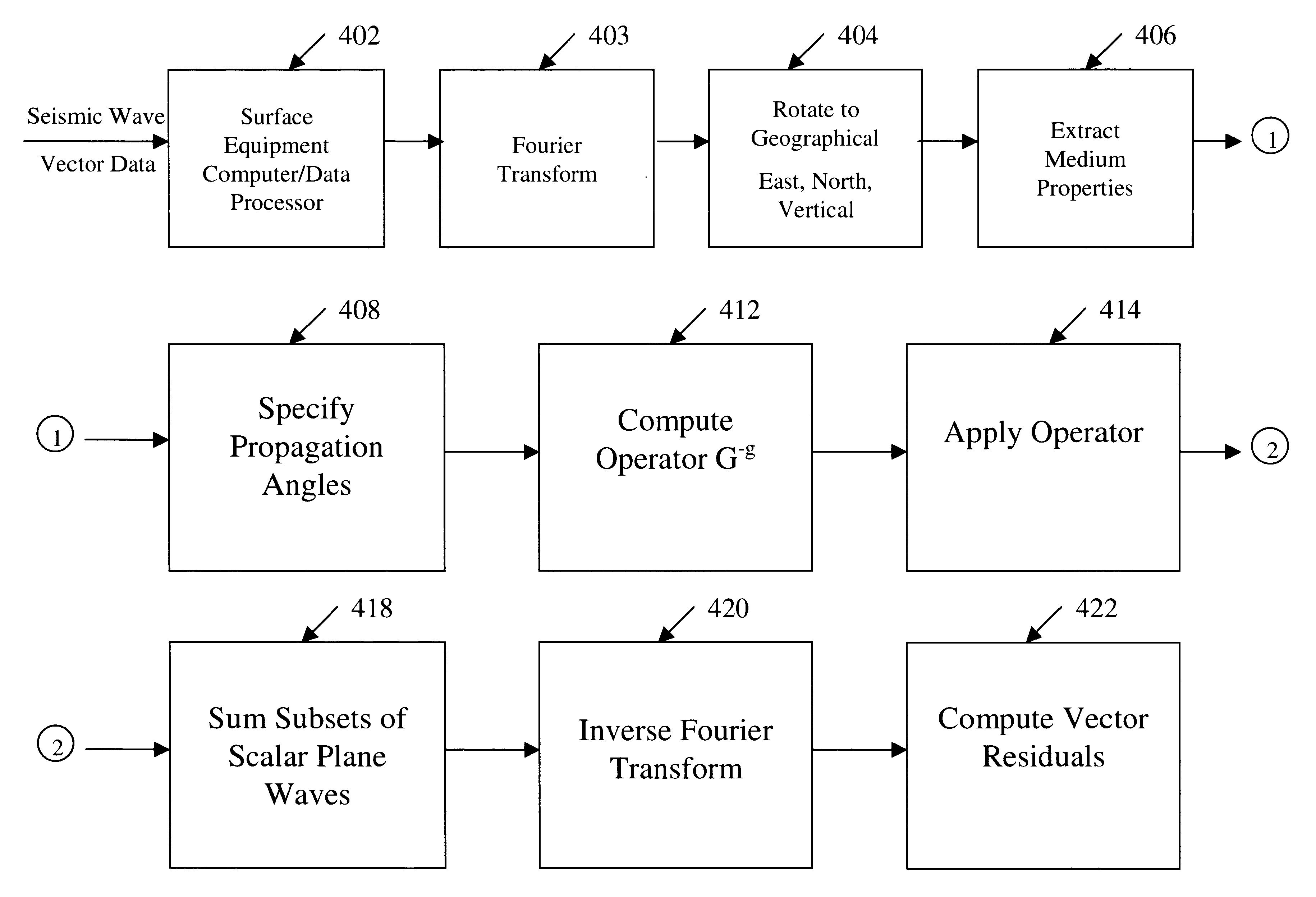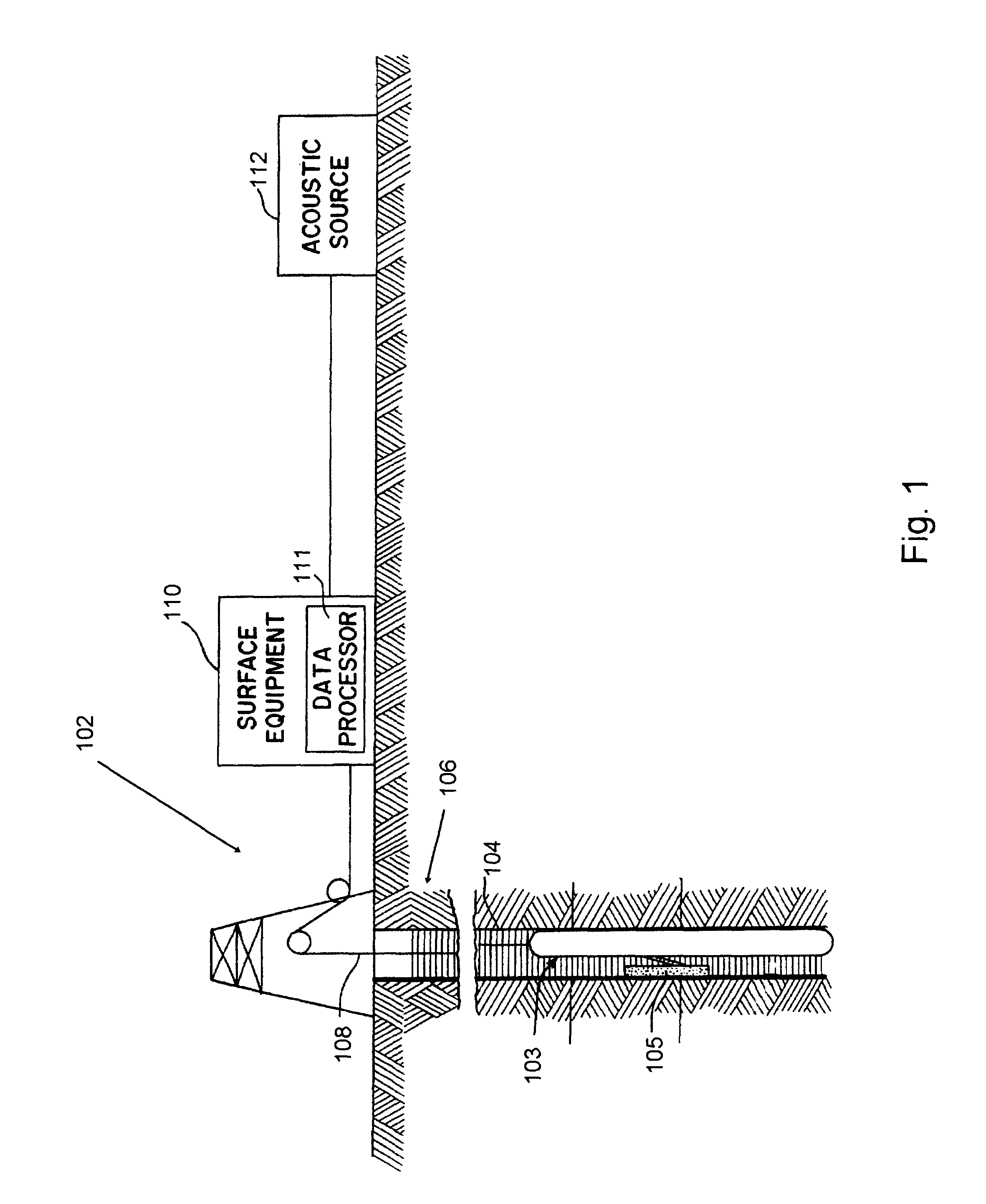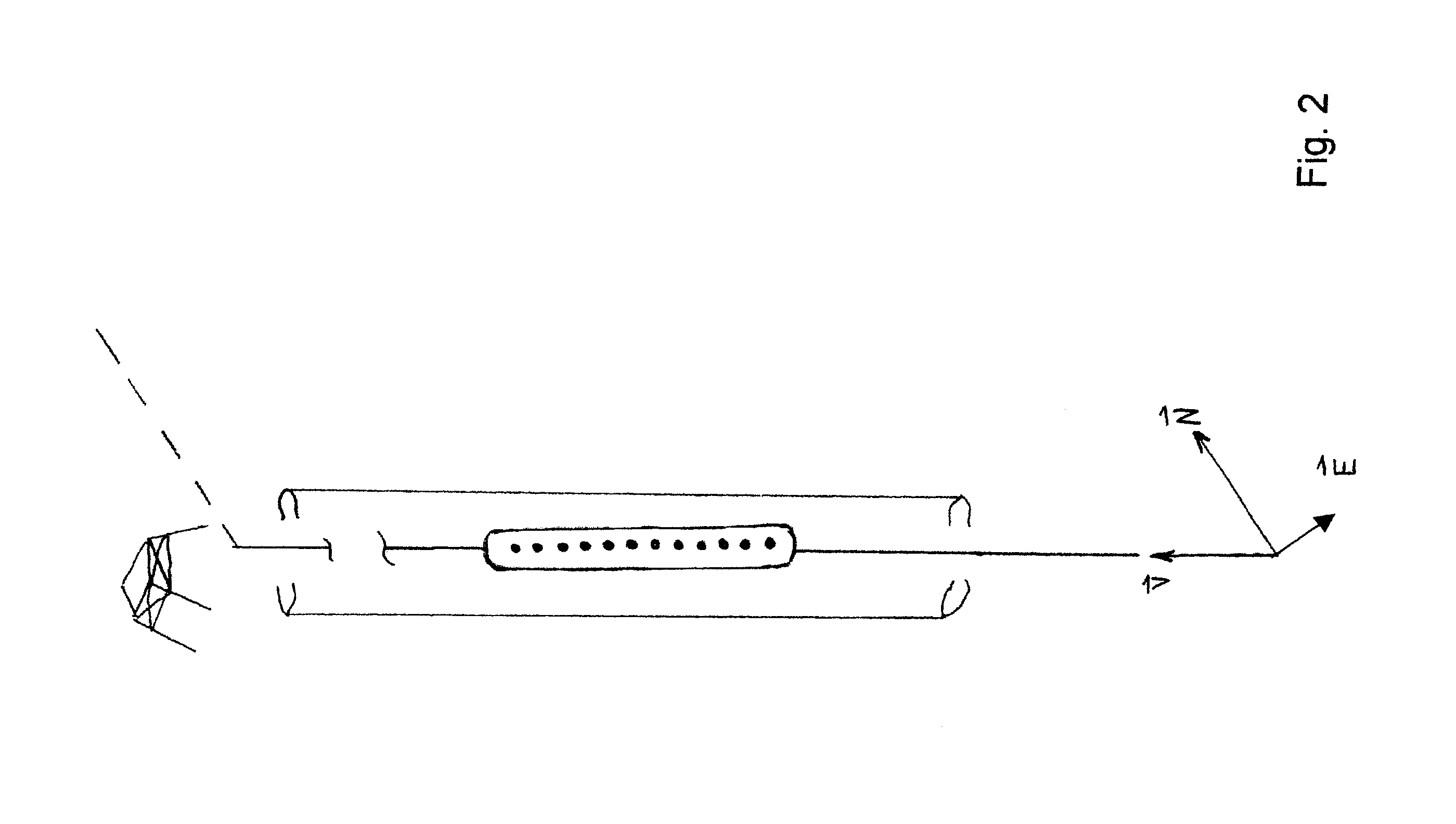Method and apparatus for anisotropic vector plane wave decomposition for 3D vertical seismic profile data
a technology of anisotropic vector and vertical seismic profile, applied in seismology for waterlogging, instruments, measurement devices, etc., can solve the problems of small plane wave number and small spatial aperture, small plane wave size, and inability to achieve large-scale seismic profile data, simplify the job of 3c elastic wavefield separation, and reduce processing turn around time
- Summary
- Abstract
- Description
- Claims
- Application Information
AI Technical Summary
Benefits of technology
Problems solved by technology
Method used
Image
Examples
Embodiment Construction
According to the embodiment(s) of the present invention, various views are illustrated in FIGS. 1-8 and like reference numerals are being used consistently throughout to refer to like and corresponding parts of the invention for all of the various views and figures of the drawing.
One embodiment of the present invention comprising the steps of specifying propagation angles for each wave type by specifying the angular aperture (elevation angle) and number of plane waves; accessing common shot 3C vector data for each receiver in the array; extracting medium properties local to the receiver array such as the TI elastic moduli; computing the 3D slowness and polarization vector operators at each receiver; Fourier transforming (FT) all waveforms; inverting the projection moveout matrix; applying the operator to the data at each frequency; constructing sums of subsets of plane waves based on wave type and propagation angle; and inverse Fourier transforming all waveforms, teaches a novel app...
PUM
 Login to View More
Login to View More Abstract
Description
Claims
Application Information
 Login to View More
Login to View More - R&D
- Intellectual Property
- Life Sciences
- Materials
- Tech Scout
- Unparalleled Data Quality
- Higher Quality Content
- 60% Fewer Hallucinations
Browse by: Latest US Patents, China's latest patents, Technical Efficacy Thesaurus, Application Domain, Technology Topic, Popular Technical Reports.
© 2025 PatSnap. All rights reserved.Legal|Privacy policy|Modern Slavery Act Transparency Statement|Sitemap|About US| Contact US: help@patsnap.com



